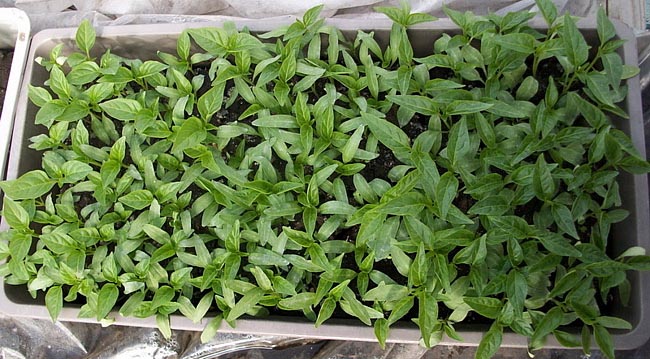 Bell pepper grows in every garden, regardless of climatic conditions. In our country, gardeners are actively engaged in sowing at the end of winter, which helps to get a quality crop.
Bell pepper grows in every garden, regardless of climatic conditions. In our country, gardeners are actively engaged in sowing at the end of winter, which helps to get a quality crop.
Peppers are grown in seedlings due to the long vegetative period. A vegetable does not just need warmth, it requires special care. Therefore, seedlings are better not to dive.
Content
If pepper grows at home
Picking is considered mandatory with the seedling method of cultivation. It consists not only in transplanting the sprouts for different capacities, but also in pinching the main root. The procedure helps: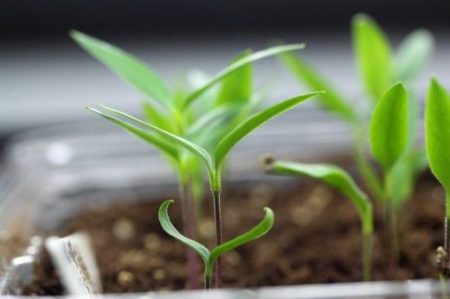
- provide the culture with a large area of nutrition;
- reject poorly developed, infected peppers;
- adjust the growth of seedlings so that the seedlings do not stretch out;
- activate the development of lateral roots and the entire root system
When transplanted, the plant is stressed, therefore, after a dive, it does not take root in the new territory for a long time. The root system of pepper is very sensitive. But in order to grow a vegetable without picking, you need to be especially careful about capacities, planting time, soil.
How to choose a container?
When a pick of pepper is still applied, the seeds are first placed in shared containers. This helps create a favorable climate for all future shoots. In addition, small peppers do not need a large space. When the seedlings are already growing a little, they are placed in separate pots.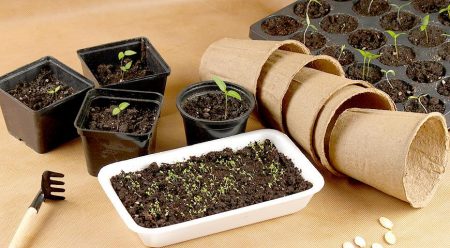
What is a non-picking method? Peppers are planted in different small containers, and a little later they pick up containers, depending on the size. Seeds can be sown in small plastic or paper cups, mini-cassettes. These containers must be prepared in advance according to the number of peppers. If there are a lot of them, 2 grains are placed in each container, then they look which seedling is weaker and remove it.
Containers in which transshipment will be done are also prepared immediately. Transshipment and picking are different concepts. The first involves placing the plant in a large container along with a lump of earth. The root system remains intact, and the plant remains healthy.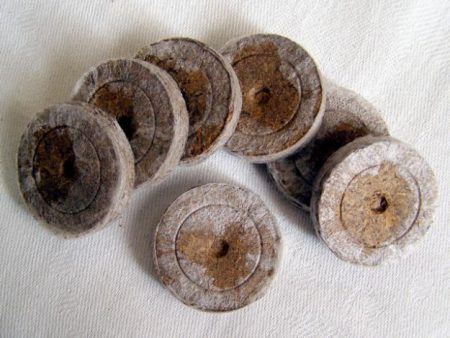
At the bottom of each cup, a hole is made to remove water from the ground. It is advisable to use pallets as well as supports so that the ground does not cool from the windows.
Peat pots and pills are popular today. The first option is convenient, since you can immediately transplant the sprouts into a greenhouse or greenhouse. Peat has the property of decomposing, thereby freeing the roots of peppers.
Sowing seeds into tablets is beneficial, because when 3 or 4 leaves appear, they are planted together with peat in a container with the ground. However, if this type of packaging is used, the peppers need extra moisture, otherwise they will dry out. Peat instantly absorbs liquid, which can cause its lack for plants.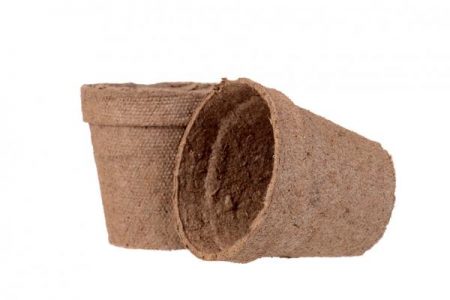
Priming
Soil quality is essential for crop development. You can use a purchased mixture, but consisting not only of peat. Peppers are best suited: turf, leafy land, peat, humus, processed river sand.
If the purchased mixture consists of one peat, sand and earth are added to it, for looseness and better air passage. When buying soil in a store, you need to carefully read the list of components.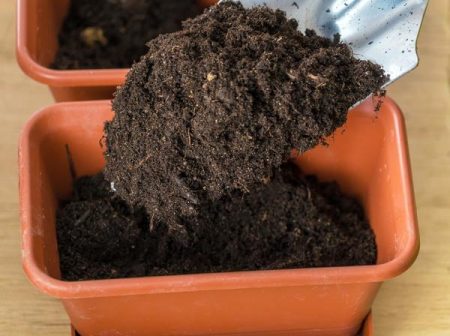
Seedlings are grown in the spring, but the soil is prepared in the fall. You can use meadow turf or forest land dug from under deciduous, but not coniferous trees.In winter, the soil freezes, so before planting the seeds, it must be taken to the room and warmed up. The soil must be steamed, sieved and treated with a solution of potassium permanganate.
Sowing time
When to plant pepper seeds and what does it depend on? To determine the deadline, you need to consider:
- variety of pepper and its characteristics;
- weather features of the region;
- conditions where the vegetable will grow
As a rule, peppers are grown in greenhouses and greenhouses, where a larger crop is obtained. Open ground is acceptable for culture only in the south, and in cold Russian regions it is better not to experiment.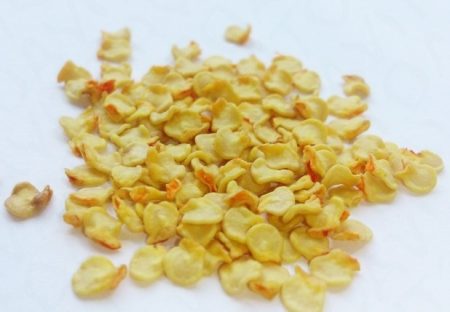
Some gardeners make “ridges” for peppers: they plant vegetables under arcs covered with a film or non-woven material.
The best time for sowing is the end of February or the beginning of March. You can say even more precisely by looking at the lunar calendar.
Early ripe peppers are sown until the end of March, because they need time for seed germination, middle and late - until mid-March, in order to have time to form fruits.
Sowing procedure
Before lowering the planting material into the ground, these seeds:
- Sort and calibrate, especially if they are not purchased;
- etched with potassium permanganate;
- sprout
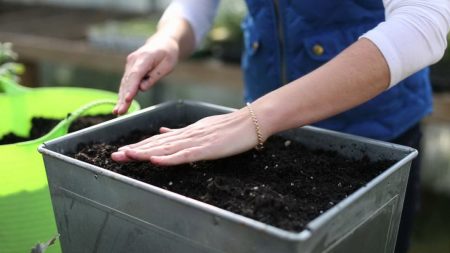
Potassium permanganate should be pink in color, they put seeds in bags for about 20 minutes. Then washed in clean water, dried thoroughly. To sprouts quickly and amicably formed, the planting material is soaked in a solution of EPIN, sodium humate or Ideal fertilizer.
For germination uses moist material and flat containers. The optimum temperature is from +25 degrees, with a lack of water, the seeds are watered. When germinating at least part of the grains begin sowing.
The soil is distributed into prepared cups, 1-2 pieces each, watered, sprinkled a little, covered with a film. The containers are placed in a warm room and constantly check for the presence of sprouts.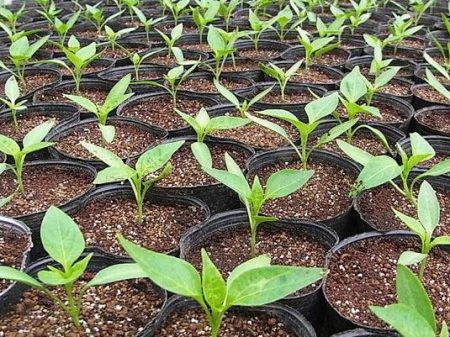
As soon as the seedlings appear, the film is removed, the seedlings are transferred to a more illuminated area and the temperature is reduced to +18. In such conditions, the culture is 5-6 days, it is not watered.
Care
Seedlings need to be provided with water, carefully loosened, and of course fed.
A week, young plants are in rather harsh conditions: at an average temperature and without watering. This is necessary for root growth and to prevent peppers from stretching. After a week, the seedlings are watered so that water does not fall on the leaves, otherwise diseases are possible. Excess and lack of fluid are unacceptable.
It is advisable to feed seedlings at home twice. For this, complex or special formulations, for example, AGRICOL, KEMIR, are suitable.
Protection
Pepper cannot develop without lighting; it needs sun. The daylight hours of this vegetable are at least 12 hours. If plants were planted in March or February, they usually lack light. Therefore, gardeners use phytolamps, fluorescent lamps.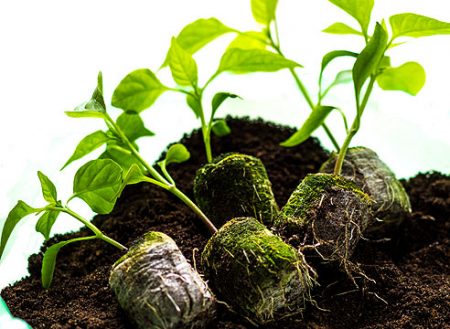
But it should be borne in mind that at the end of spring a very bright sun can shine, so in the evening peppers from the south should be covered.
Culture needs protection after transshipment. Vegetables for 2-3 days are covered with curtains or a “shield” from newspapers. Then there will be no burns on the leaves, and the seedlings will not fade.
Temperature
In order for seedlings to grow in quality and wholesome, it must be provided with heat. However, according to inexperienced gardeners, peppers feel better at high temperatures. But not everything is so simple: at each stage of plant development, indicators should be different.
Before planting in open ground, seedlings are tempered, exposed on the veranda or balcony, where windows or windows are open. Pepper is gradually accustomed to coolness, starting from 15-20 minutes.In a temperate climate, plants can be taken outside, where they get used to unfamiliar conditions. This is true for residents of private homes. Such sprouts adapt better to greenhouses, develop faster.
The final planting of pepper is done in warm weather, at an air temperature of 16-18 degrees.
With an increase in daylight, experienced vegetable growers in early May provide seedlings with lighting lasting 12 hours. From 6 p.m. to 6 a.m. you can cover peppers. Then the crop will yield an earlier crop.
Reviews
“In my opinion, peppers do not need a pick at all. I used it before, but I only suffered from this seedling. Although I always carefully transplant the peppers. They told me that it’s better to sow the seeds in pots right away. So they grow better. And when I plant a vegetable in a greenhouse, its root system remains safe and sound, and the plant easily takes root ”(Elena);
“My little peppers grow in peat tablets moistened with water. When 3 leaves appear, I directly transplant them into large containers, where they are located up to the open ground. The beds with plants must be mulched and watered by drip. Then there will be a cool harvest ”(Andrey)
Apply pick or not? Each gardener decides for himself. Opinions of experts on this issue differ. But growing pepper seedlings without this procedure is absolutely safe, since the root of the plant does not need to be pinched.




 Calorie pepper stuffed with meat and rice - BZHU per 100 grams
Calorie pepper stuffed with meat and rice - BZHU per 100 grams Gorky pepper - the best varieties for open ground
Gorky pepper - the best varieties for open ground Hot pepper seeds - the best varieties for open ground and reviews
Hot pepper seeds - the best varieties for open ground and reviews Capsicum tincture for hair - how to use and reviews
Capsicum tincture for hair - how to use and reviews